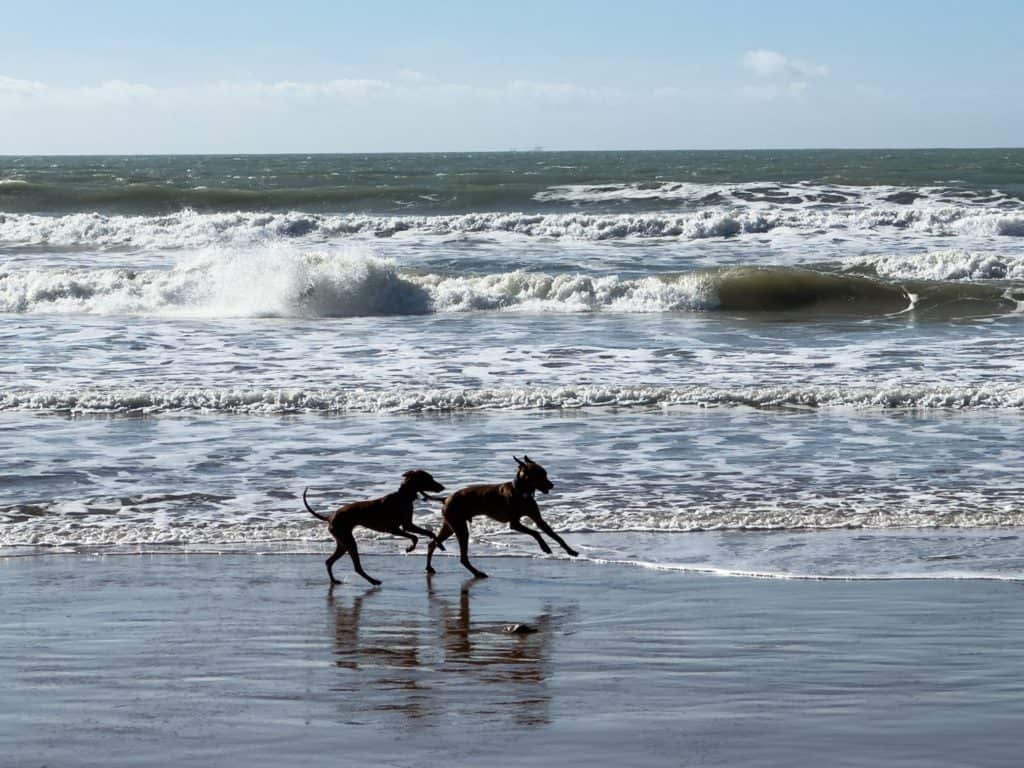Overweight? What can you do?
Is my pet too heavy? Am I feeding correctly? Do I need to change anything? Three questions that lead to uncertainty for many pet owners. Even the first question is not always 100% to answer and must be determined individually for each pet. There is no absolute number there, but rather a weight range that is considered natural and healthy. Weight fluctuations are normal and are part of nature. Many wild animals are much fatter in the fall than in the spring, because fat is an energy store for bad times! Our pets also have a 'weight rhythm' that is considered natural and healthy. Only when the pet leaves this weight range, illnesses threaten in the long term.
In practice, when we are asked the question about the ideal weight, we assess the presented animal according to certain criteria and thus determine whether or not we are within the normal range. If not, we give an approximate percentage deviation. Together with the currently measured body weight, we can then calculate where the ideal weight should be approximately, and from this we can then conclude what we should change in the feeding.
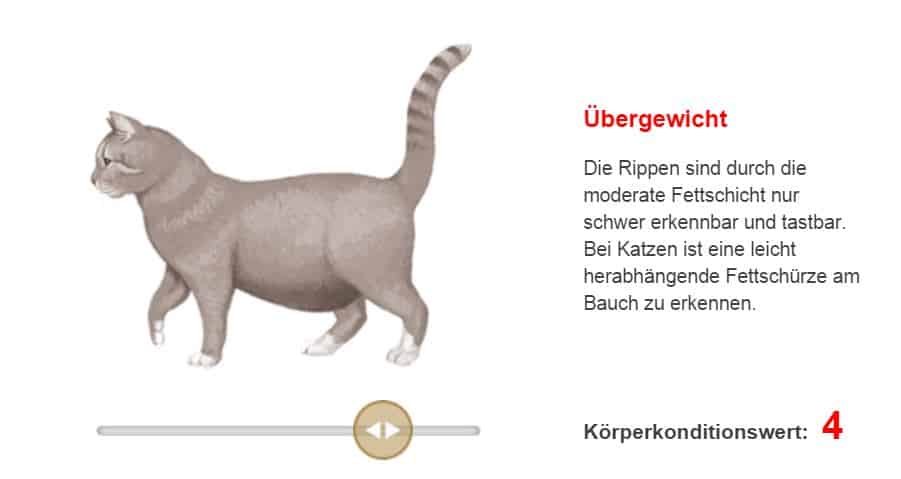
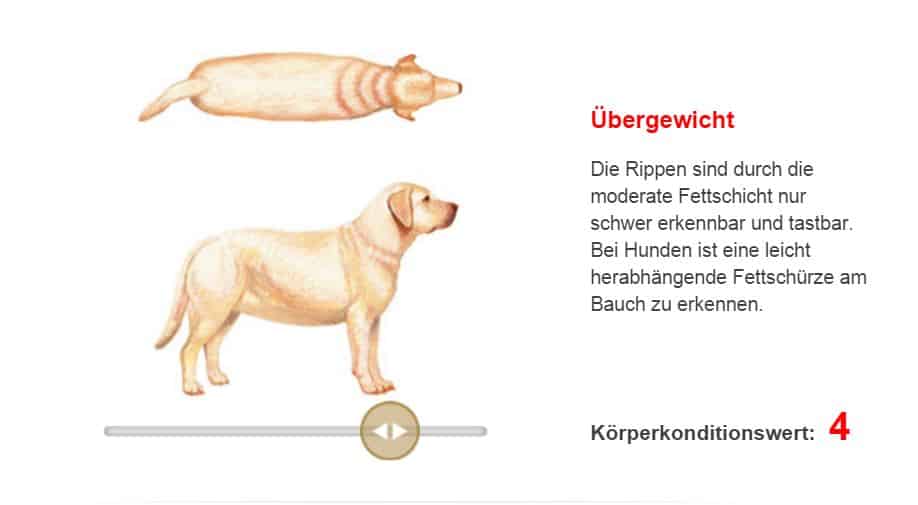
Excess weight is a health threat above a certain level, especially if they are mainly kept indoors. Indoor cats have a high incidence of osteoarthritis, because they do not move enough and the joints are not sufficiently nourished and lubricated. Obesity significantly exacerbates this problem. Overweight animals are significantly more at risk for diabetes, heart disease and urinary stones. In animals kept exclusively indoors, obesity occurs more easily and is much more difficult to get rid of. That is why it is advisable to adjust the feeding already in case of slight overweight. If a 4kg cat suddenly weighs 5kg, that is 25% overweight. For a human of 60kg this would be 75kg. This makes the feeding factor an important issue.
Our pets almost all love to eat and we do not want to deprive them of this fun. So we have to find a way to meet this need without making them unhappy! Feeding, besides being a necessity in itself, is also an important daily contact between the pet and its owner. For many pets even the 'highlight' of the day!
What can be done for overweight domestic cats? First of all, you should measure the amount of food, so you know how much my cat gets per day. Cats do not tolerate hunger very well. They beg and become restless. Therefore, food reduction alone helps only to a limited extent. Food is a part of the daily activity and also very important! So we should rather look that our pets are longer occupied with food. Our pets, are similar to the animals in the zoo underemployed. First, it is recommended to introduce feeding times instead of offering food around the clock. Secondly, it is recommended to hide the food so that the animals are occupied longer. There are special toys for this purpose. Remember, the amount of food should fit the 'target weight' of our pet and not the current overweight!
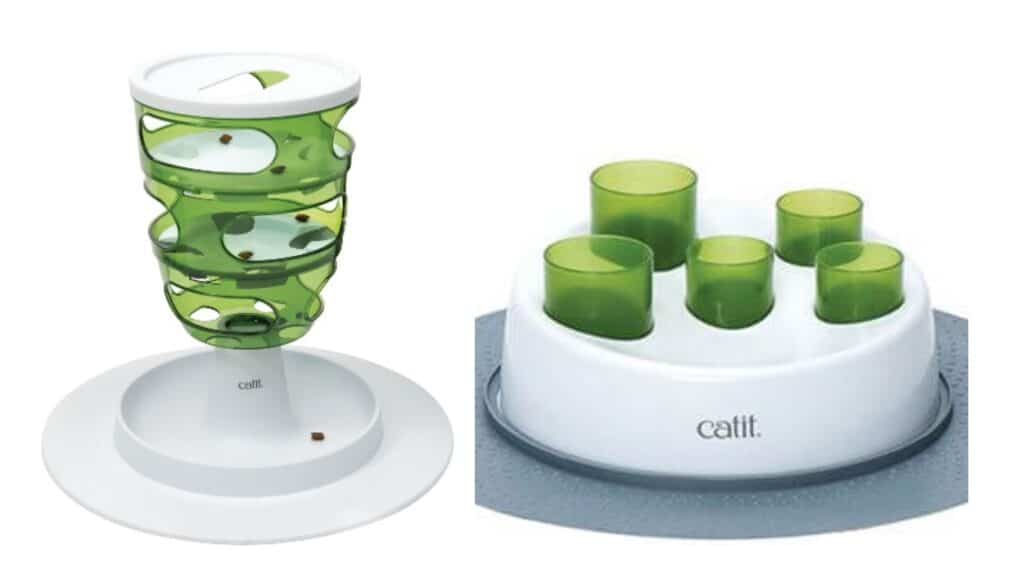
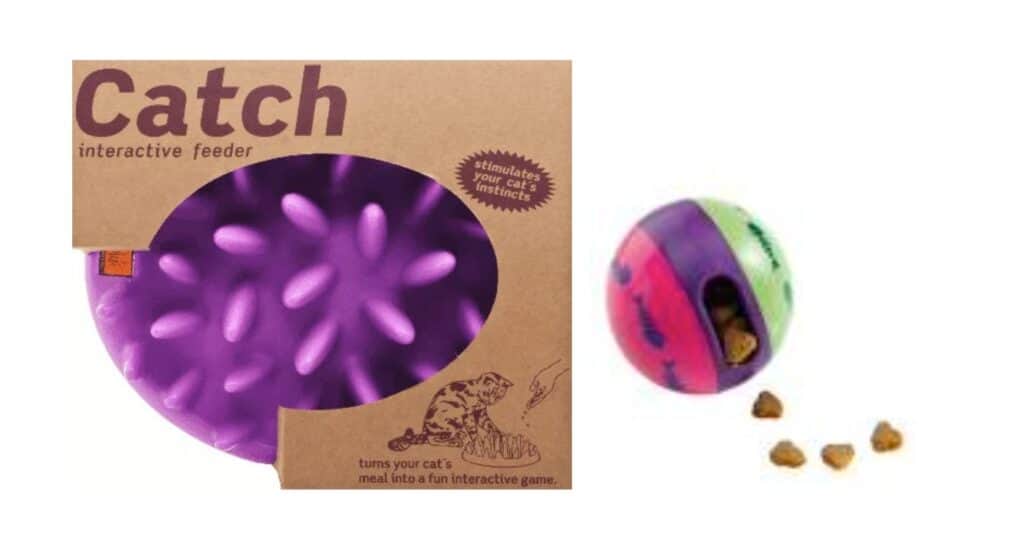
Besides the amount and the way the food is offered, the most important thing is what we feed. In this regard, diets can help us a lot, by not creating unnecessary feelings of hunger in our pets and maintaining the necessary employment through food! There are suitable diets for overweight animals (obesity), which allow the animals to lose weight without stressing the metabolism or causing hunger pangs. These high quality diets are completely without artificial preservatives and additives. These diets greatly facilitate weight loss. They are available from various manufacturers as dry food and wet food. Gutzis should be included in the daily food ration. We will be happy to advise you individually.
So what role does the much-discussed 'sugar' in pet food play? Does sugar in pet food make our pets sick? Too much sugar in the diet is not desirable, but our pets also need the carbohydrates. Our pets do not become diabetic because there is some sugar in the food, but because they are fed in excess. Obesity is the main risk. But if a feed contains too many carbohydrates, i.e. too little meat, but too much sugar or cereals, they are a risk factor for the development of diabetes, especially in cats. In cheap feeds, unfortunately, is often saved in the meat content, which is not good. It is therefore worthwhile to invest in more expensive feed! The cats and dogs will thank you with better health.
Is a meat-only diet healthier?
Meat is important in the feeding of dogs and cats. For cats as pure carnivores, it is irreplaceable and must be offered imperatively, otherwise there is a risk of severe deficiencies. Dogs also depend on animal foods. However, they do not need to be fed primarily on meat. Raw meat is actually very healthy for dogs and cats. But there are several factors that can make feeding raw meat a risk. On the one hand, our pets are not 'scavengers', which means they need really fresh meat that would also be safe for us humans to eat. On the other hand, especially dogs need more than just pure meat, because meat alone does not provide all the nutrients that are needed. Without further additions the animals fall then with the time into deficiency conditions! Dogs have adapted to humans over hundreds of years and get along with much less meat than the wolf. In growing dogs, excessive protein intake (too much meat) can cause growth disorders. So in most cases, feeding commercially available feeds is safer and healthier for our pets.
In summary: There are objective criteria for whether an animal is overweight or not. Severe overweight is a serious health risk. Losing weight in pets is easier today than it used to be. We will be happy to help you. Just come by and see us.

